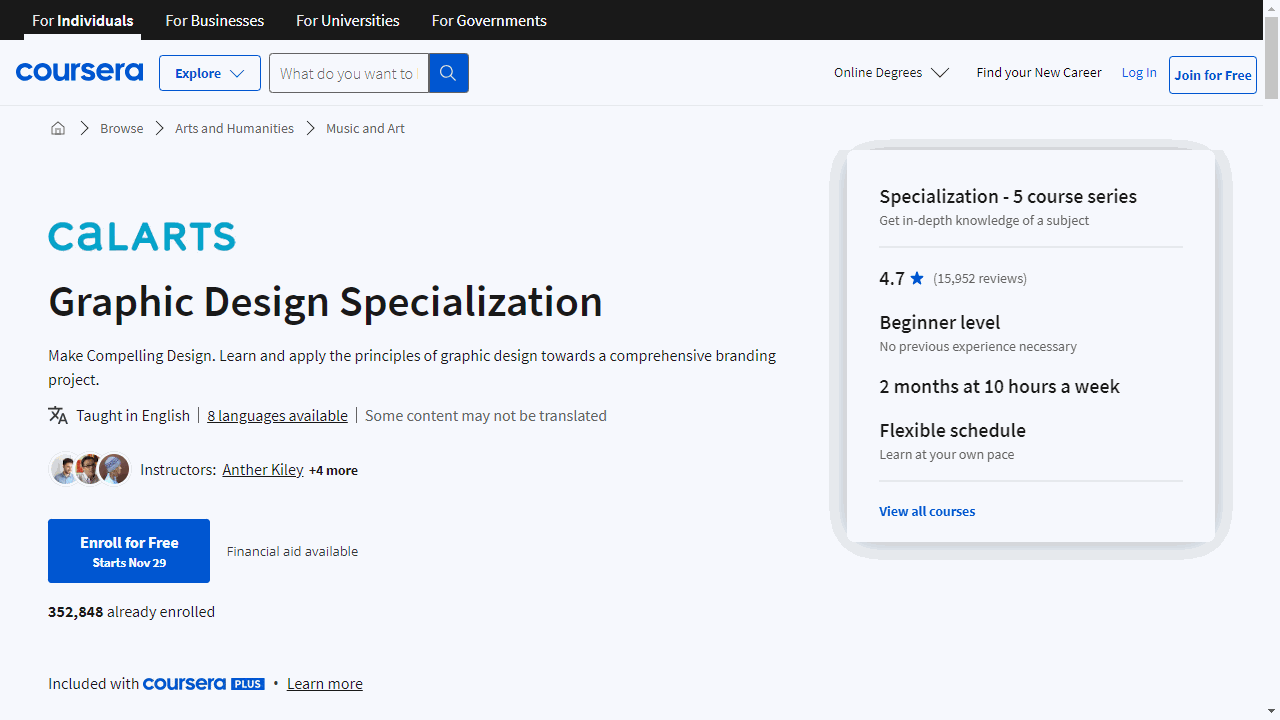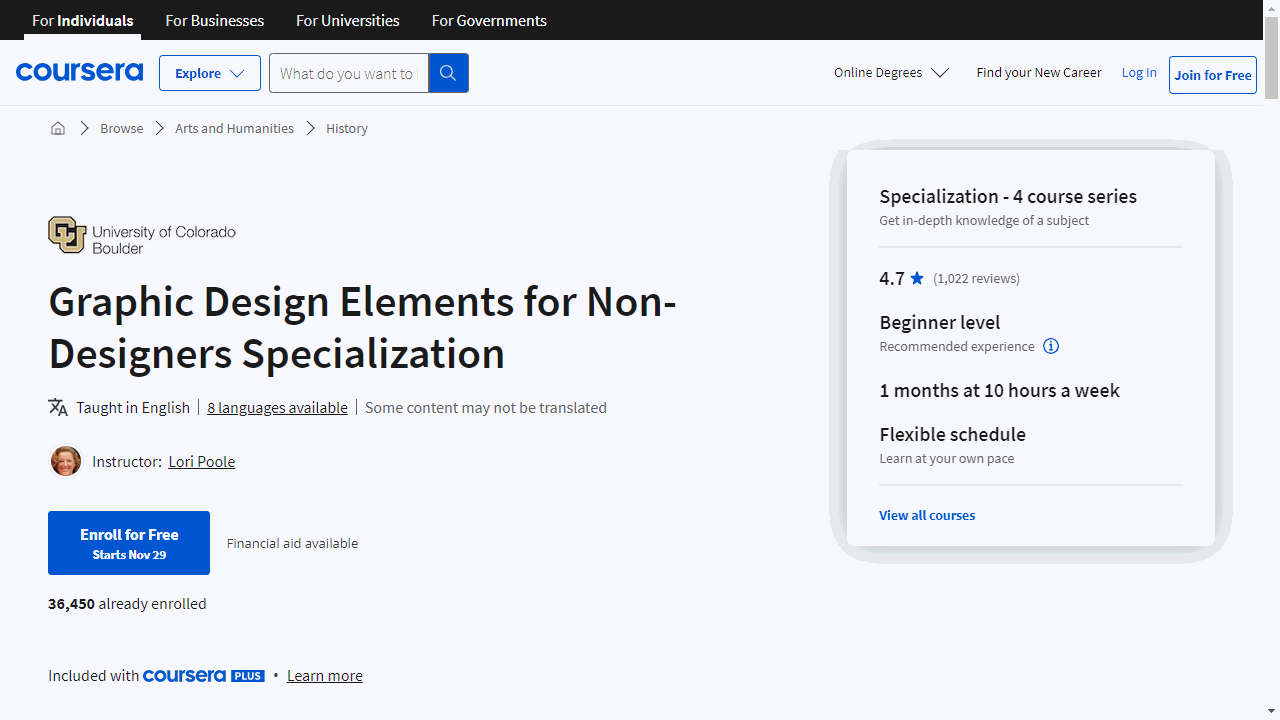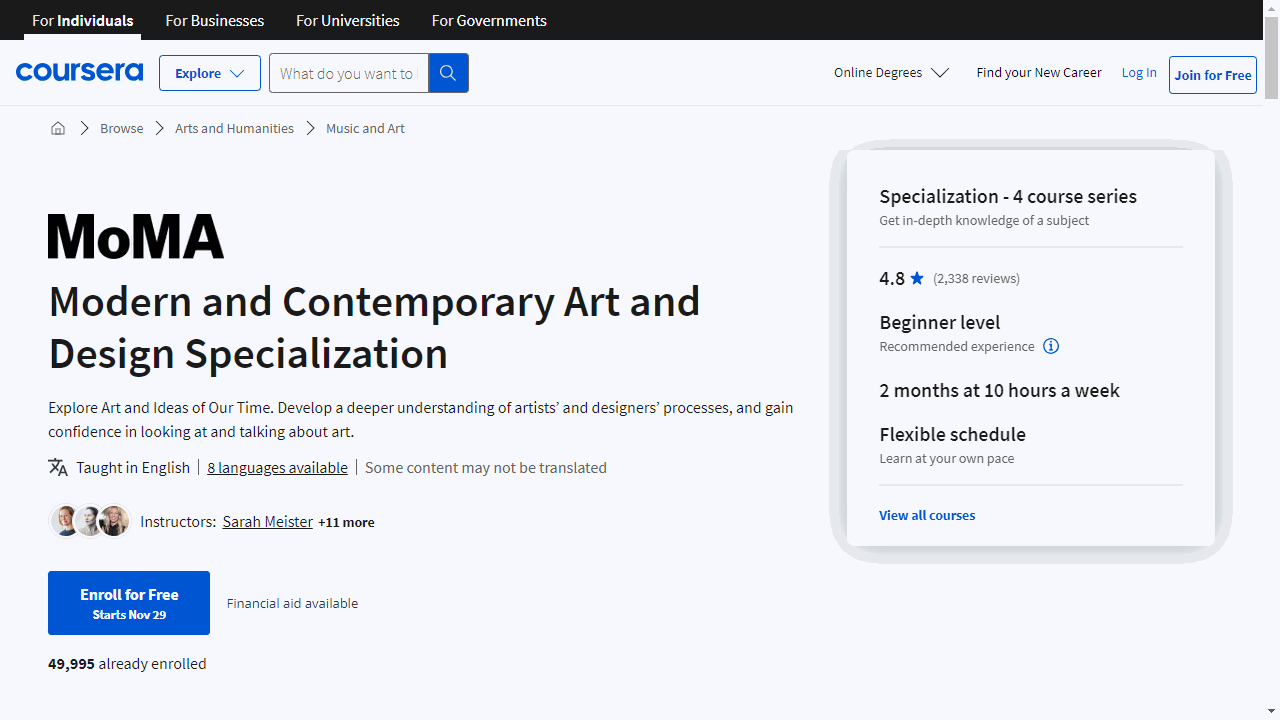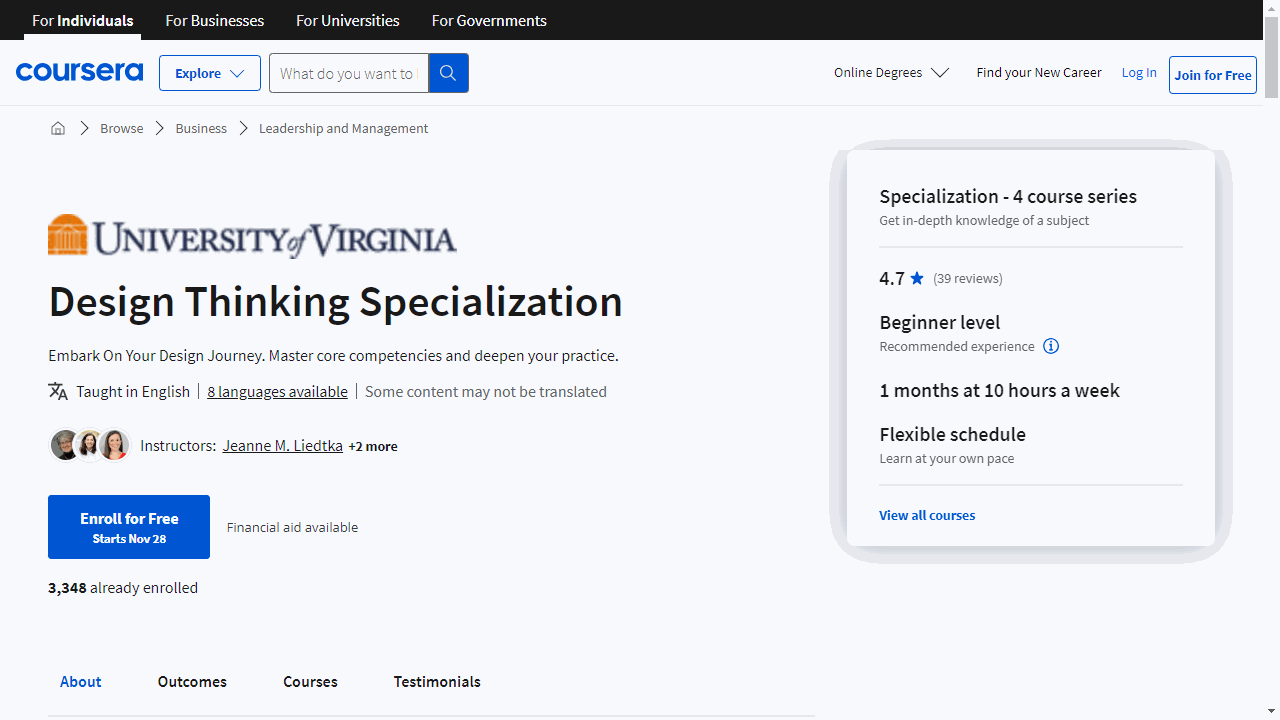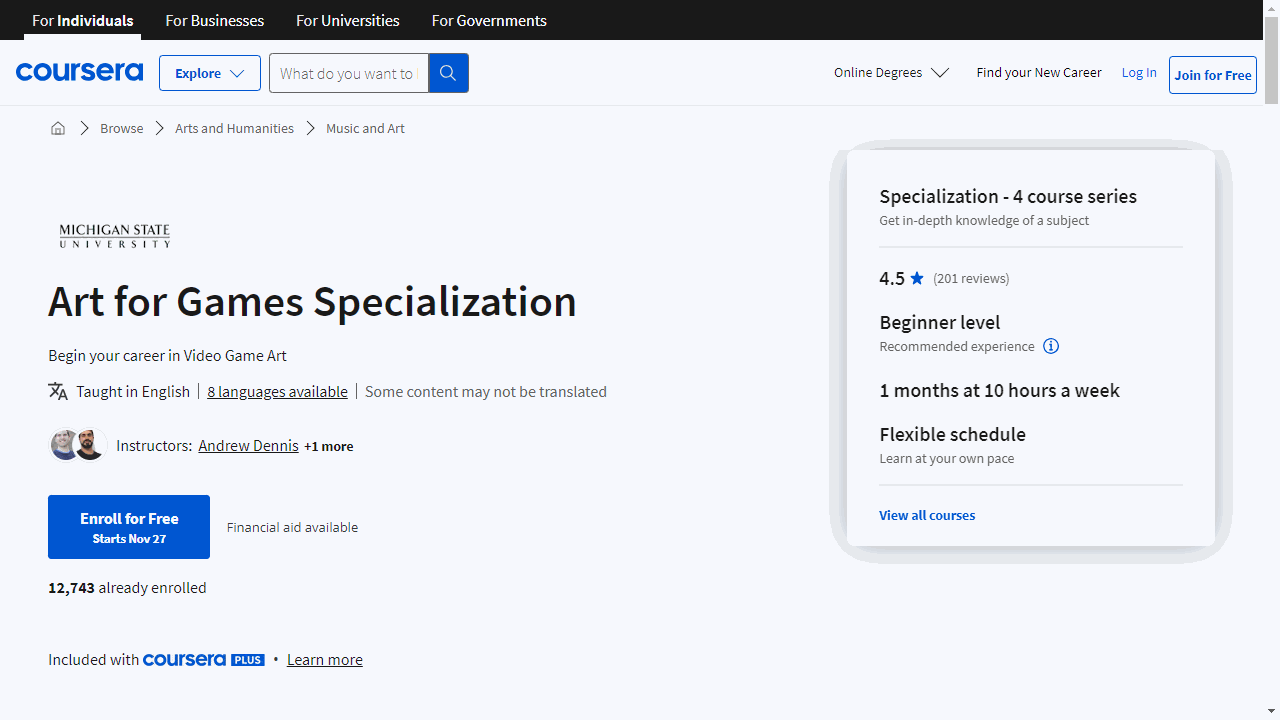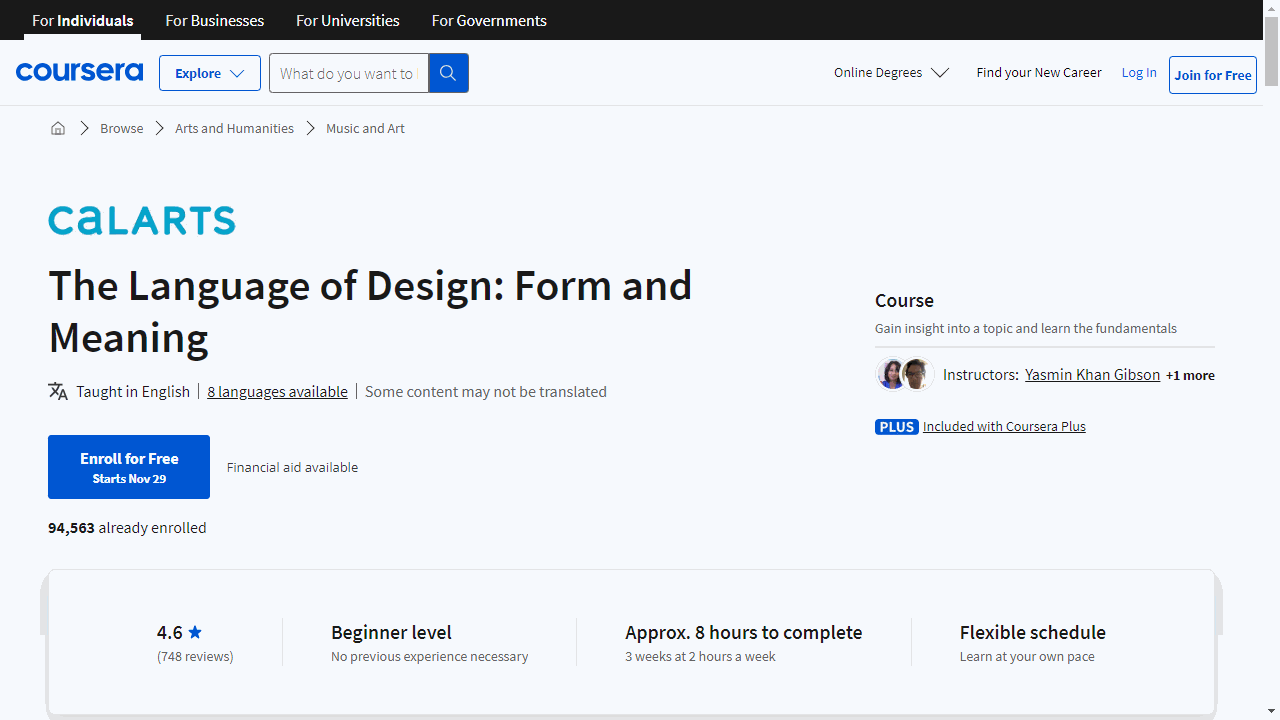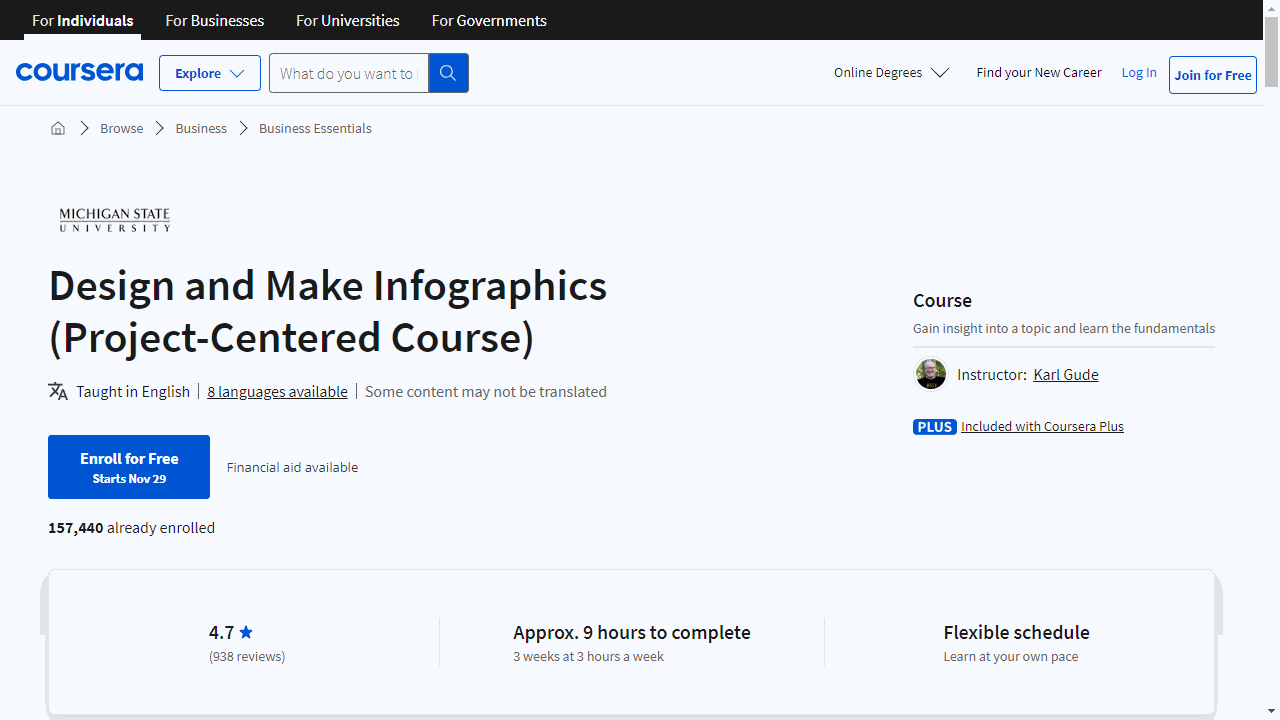Graphic design is a powerful tool for communication, combining visual elements and typography to create engaging and effective messages.
It’s a versatile skill that can be applied to a wide range of fields, from marketing and advertising to web design and user interface (UI) development.
Learning graphic design can help you develop your creativity, enhance your communication skills, and even open doors to exciting career opportunities.
Finding a high-quality graphic design course on Coursera can be a challenge, with so many different options available.
You’re looking for a program that’s comprehensive, engaging, and taught by experienced professionals, and you might be unsure where to begin.
For the best graphic design course overall on Coursera, we recommend the Graphic Design Specialization offered by CalArts (California Institute of the Arts).
This program provides a strong foundation in the fundamentals of graphic design, covering core principles like color theory, typography, and composition, while also teaching you to use industry-standard software like Adobe Photoshop and InDesign.
This specialization is designed to equip you with the skills and knowledge necessary to succeed as a graphic designer, from creating visually appealing designs to developing a strong portfolio.
While this is our top pick, we also have a number of other excellent graphic design courses to explore, catering to different learning styles and interests.
Keep reading to discover our full list of recommendations and find the perfect course for your journey.
Graphic Design Specialization
The specialization, offered by CalArts (California Institute of the Arts), begins with “Fundamentals of Graphic Design,” a course that immerses you in the core principles of the field.
You’ll engage in hands-on projects that teach you to harness color, shape, and typography, essential skills underpinning all graphic design work.
Plus, you’ll become familiar with industry-standard Adobe tools (Photoshop, and InDesign), setting a solid foundation for your creative endeavors.
Moving on to “Introduction to Typography,” you’ll delve into the nuanced world of type, where the shape of letters can dramatically affect communication.
This course isn’t just theoretical; it’s a practical guide to crafting messages with impact, culminating in the design of a typographic poster.
Here you will learn to use Adobe Illustrator, a powerful tool for creating vector graphics.
“Introduction to Imagemaking” shifts your focus to visual expression, encouraging experimentation with various techniques to produce compelling images.
The course culminates in the creation of an image-based book, a project that not only showcases your skills but also expands your creative vocabulary.
The “Ideas from the History of Graphic Design” course offers a rich context for your practice, exploring the evolution of design and its cultural significance.
This historical insight informs your modern approach, allowing you to make design choices that resonate in today’s visual landscape.
Finally, “Brand New Brand” is the capstone project that synthesizes your learning.
Here, you’ll conceive and develop a complete brand identity, applying your skills in a real-world scenario that demonstrates your readiness to tackle professional challenges.
You’ll be well on your way to becoming a graphic designer, with a portfolio that showcases your ability to think, create, and communicate visually.
Graphic Design Elements for Non-Designers Specialization
This series of courses, offered by the University of Colorado Boulder, is designed to equip you with the essential skills to create designs that are both aesthetically pleasing and effectively convey your message.
In “Basic Elements of Design: Design Principles and Software Overview,” you’ll delve into the core principles that make design compelling.
You’ll learn to analyze content, layout, and audience, moving beyond superficial aesthetics to create meaningful visual narratives.
This course empowers you to collaborate confidently with creative professionals and to leverage design as a strategic tool.
“Graphic Elements of Design: Color Theory and Image Formats” offers a deep dive into the world of color and graphics.
You’ll differentiate between color systems like CMYK and RGB, and understand when and how to use them.
The course also demystifies image formats, ensuring you choose the right type for your project.
Plus, you’ll gain insights into crafting impactful logos that embody your brand’s identity.
Typography takes center stage in “Textual Elements of Design: Fonts, Typography, and Spacing.”
Here, you’ll explore the nuances of type selection and the intricacies of font pairing.
The course covers the historical context of typography and practical skills like adjusting kerning and tracking, enabling you to create text that complements your overall design.
Lastly, “Print and Digital Elements of Design: Branding and User Experience” bridges the divide between physical and digital mediums.
You’ll learn to navigate the challenges of adapting designs for print and online platforms while maintaining brand consistency.
The course also touches on user experience principles, guiding you to craft designs that are not only visually appealing but also user-friendly.
Each course is rich with practical knowledge, from print and online design to color theory and typography.
Modern and Contemporary Art and Design Specialization
This collection of courses offers a comprehensive look into the art and design world that’s both accessible and deeply informative.
Dive into “Modern Art & Ideas” to explore the intersection of environment, identity, and society in art.
You’ll gain insights from artists and curators, connecting art to your own life through interactive discussions.
It’s an enriching experience that broadens your understanding of modern art’s themes and practices.
“Seeing Through Photographs” elevates your engagement with images.
This course isn’t just about taking pictures; it’s about dissecting the intent and narrative behind them.
With an expanded collection of photographs and new interactive content, you’ll learn to critically analyze and discuss photography, enhancing your visual literacy.
“What Is Contemporary Art?” demystifies the art of our era.
Through a selection of over 70 recent works, you’ll hear directly from artists and learn about their creative processes.
This course empowers you to confidently approach contemporary art, recognizing its relevance to current issues and your own experiences.
Lastly, “Fashion as Design” examines the ubiquitous world of fashion.
By studying over 70 garments and accessories, you’ll understand fashion’s multifaceted role in culture, politics, and economics.
This course offers a deep dive into the lifecycle of clothing, from creation to consumption, encouraging thoughtful perspectives on fashion choices.
Each course is skill-focused, covering Art History, Creativity, and more, providing you with a rich learning experience.
Design Thinking Specialization
Starting with “Design Thinking: Insights to Inspiration,” you’ll learn to identify and research human needs, setting the foundation for effective solution development.
This course emphasizes strategic thinking and innovation, guiding you through the initial stages of the design thinking process.
Moving on to “Design Thinking: Ideas to Action,” you’ll transform your insights into tangible concepts.
This course focuses on ideation and experimentation, teaching you to refine and test your ideas to ensure they resonate with users.
In “Design Thinking: Discovery Tools,” you’ll master essential tools for understanding your audience, such as stakeholder and journey mapping, personas, and ethnographic interviews.
This practical knowledge is crucial for creating designs that truly connect with users.
Lastly, “Experiencing Design: Deepening Your Design Thinking Practice” immerses you in the transformative aspects of design thinking.
You’ll explore six phases of the design journey and develop a Personal Development Plan to track your growth, gaining insights from industry leaders along the way.
Each course in this specialization, crafted by experts at the Darden School of Business, is designed to build upon the last, ensuring a well-rounded education in design thinking.
Art for Games Specialization
“Pixel Art for Video Games” is the first course in this specialization, where you’ll grasp the essentials of pixel art, from shape language to color theory.
You’ll progress from crafting simple props to animating characters, culminating in a project where you create a pixel art asset pack.
This course is perfect for beginners and offers a practical approach to art creation for games.
Moving into the third dimension, “Low Poly Art For Video Games” teaches you to create stylish 3D art with a focus on low poly techniques.
The course guides you through a workflow that’s essential for building your own game assets, equipping you with the skills to produce an original asset pack by the end of the modules.
For those with some 3D experience, “Current Gen 3D Game Prop Production” elevates your skills to industry standards.
You’ll learn to craft photo-realistic game props using advanced tools like Maya, Zbrush, and Substance Painter.
The course emphasizes real-world accuracy and game-ready low poly meshes, ensuring your final model is portfolio-ready.
Lastly, “Concept Art for Video Games” hones your digital painting skills.
You’ll explore composition and painting techniques to create a polished environment concept.
This course is ideal for those with a flair for art and design, aiming to translate their vision into compelling game environments.
The Language of Design: Form and Meaning
This course isn’t just about aesthetics; it’s a deep dive into how design communicates and resonates with audiences.
From the outset, you’ll master the art of critique, learning to articulate the ‘why’ behind design choices using a specialized lexicon.
This vocabulary becomes your toolkit for dissecting and discussing design work with precision.
Peer review is central to this course, offering a valuable exchange of perspectives.
You’ll learn to give and receive feedback constructively, a skill that will elevate your designs and help you grow as a designer.
Each week unfolds a new layer of design understanding.
You’ll start by examining the interplay between audience, context, and culture, recognizing that design is a conversation with viewers.
The following week, you’ll tackle visual form, experimenting with elements like contrast and color to create compelling visual hierarchies.
In the third week, the focus shifts to the narrative power of design.
You’ll explore symbolism, metaphors, and storytelling, learning to infuse your work with deeper meaning.
The final week challenges you to consider contemporary design and your own creative voice, culminating in a project that synthesizes all you’ve learned.
Real-world case studies, from iconic posters to the Chobani Re-Branding, serve as practical examples for analysis and critique.
Design and Make Infographics (Project-Centered Course)
The “Design and Make Infographics” course is a solid choice if you are interested in learning how to convey information visually.
This course is practical and project-centered, ensuring that you not only learn the theory but also apply it directly to real-world scenarios.
You’ll start by understanding the essence of infographics and their significance in making complex data accessible.
The course is structured to help you work through the design process, from setting clear objectives to identifying your target audience and crafting a compelling narrative.
The syllabus is rich with content that covers the essentials of infographic design.
You’ll delve into various types, learning when and how to use each one effectively.
The planning phase is broken down into six actionable steps, guiding you to refine your message and extract engaging stories from your data.
Hands-on tutorials in Adobe Illustrator will equip you with the skills to create the fundamental elements of infographics, such as bar, pie, and line charts.
You’ll also gain insights into map design, learning to draw roads and design informative pointer boxes with precision and creativity.
Color theory and typography are also key components of the course, teaching you to enhance your visuals and ensure your text complements your design.
By the end of the course, you’ll have completed your own infographic, ready to be showcased in your portfolio.
This course is designed to be interactive and engaging, with video tutorials and examples that demonstrate the design process from sketching to the final product.
